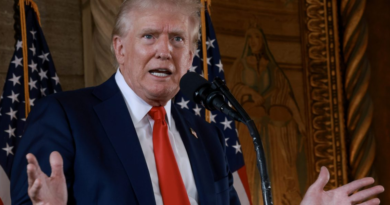Asia’s fintech firms are eyeing the Middle East for expansion because of low competition and a ‘future friendly’ regulator
Rising consumer spending, massive pools of capital and closer financial ties with the rest of the world is turning Middle Eastern countries like the United Arab Emirates, Qatar, and Saudi Arabia into attractive markets for fintech firms with global ambitions.
The Middle East presents the same opportunities that markets like Singapore did about eight years ago, says Michele Ferrario, founder of StashAway, a Singapore-headquartered robo-advisory firm and one of Fortune’s Fintech Innovators Asia. In countries like the UAE, there’s a big pool of people with money, but not a lot of investment options, apart from “not too friendly” banks, he says.
“[There’s] low competition and a regulator that’s future friendly,” Ferrario said of the UAE.
StashAway expanded its high-net-worth offerings, which offer advisory services and low fees to customers with between $2 million and $10 million, to the Middle Eastern country earlier this year.
And after building out its UAE business, Ferrario says, StashAway is eyeing further expansion in the Middle East.
Fintech hub
StashAway is far from alone, as the Middle East is becoming a fintech hub in its own right. McKinsey predicts that fintech funding in the Middle East, Pakistan and North Africa region could grow to as much as $4.5 billion by 2025.
In July, Thunes, a Singapore-headquartered global payments infrastructure provider, which already offers services in the Middle East and North Africa markets, highlighted Saudi Arabia’s attractiveness due to the kingdom’s desire to develop its digital infrastructure as a part of a plan to reduce the economy’s reliance on oil. It helps, too, that 97% of residents in the country are on smartphones.
Besides StashAway and Thunes, several other Asian fintech startups have also expanded their services to the Middle East, hoping to tap into financial flows from tourists and overseas workers. Payment services like Airwallex and the Philippines’ GCash offer their services in Middle Eastern countries like Israel and Qatar. Even big players like Ant International aren’t ignoring the region. The Alibaba affiliate is working with Saudi Arabia’s Ministry of Investment as it looks to use the kingdom as a gateway to the wider Middle East market.
It’s part of a larger drive by Asian financial hubs like Hong Kong and Singapore to deepen links with the Middle East. The former in particular is forging new links with Saudi Arabia, including setting up a new joint investment fund and listing Hong Kong ETFs on the country’s stock market.
For now, Singapore is StashAway’s largest market, followed by Malaysia. Ferrario notes that while the wealthtech firm isn’t profitable yet, it is profitable in its home market.
What is StashAway
StashAway is a digital wealth management platform, offering investment products to people in the middle income bracket and above who wish to use other institutions besides banks to grow their spare cash. Ferrario, then CEO of Zalora, a Southeast Asian apparels e-commerce platform, founded StashAway in 2016. The firm is backed by investors like Sequoia Capital and Fidelity.
Ferrario explained that Asian banks don’t want to operate low-cost ETFs. Banks face a “gigantic cannibalization problem,” as established financial institutions stick to existing products that make a lot of money in fees. Banks thus avoid ETFs as they make less money off those products.
That opens a “very large opportunity” for startups targeting new middle- and upper-class urban clients in Southeast Asia, Ferrario says. The company targets those who have between $100,000 to $10 million in cash.
And Southeast Asia’s young, growing and increasingly wealthy population could be an asset for fintech startups like StashAway. “Wealth is younger,” Ferrario says. Those in their thirties in cities like Singapore, and Kuala Lumpur in Malaysia are likely to be more affluent than their parents, meaning more money to invest.
Ferrario, too, sees himself as an example of the kind of customer StashAway wants to attract. He remembers that, during his time as Zalora’s CEO, he struggled with finding a place to invest his spare cash.
“I went to my banks asking for help on getting my money to work, and I told them I wanted to invest monthly in a set of ETFs,” Ferrario said.
Instead, the banks tried to sell him mutual funds with 2.5% entry fees. Ferrario said he was “shocked by how bad the experience was.” Ferrario said he searched for an alternative in Singapore, to no avail; that gap was what pushed him to pivot away from e-commerce to wealth management.
“Maybe rather than selling t-shirts, this is what I should be doing,” he said.



